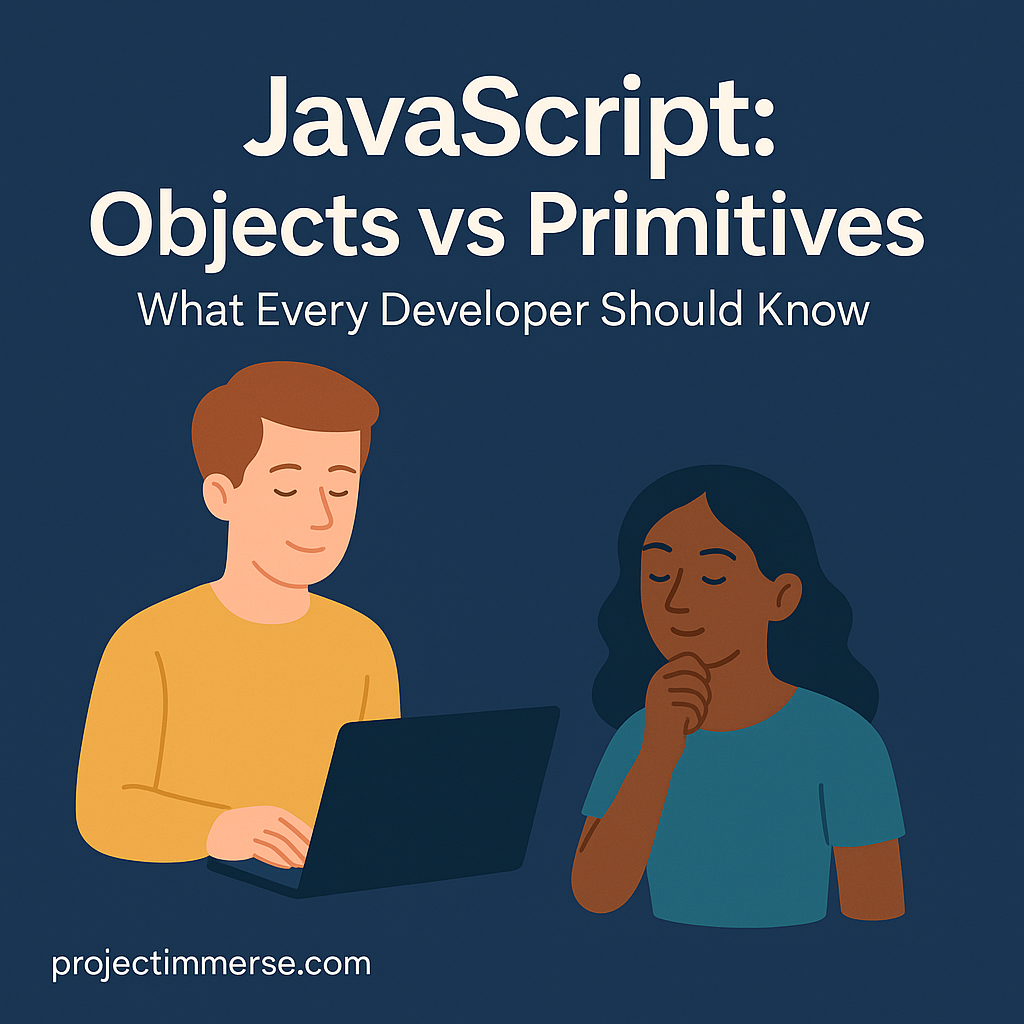
JavaScript has two foundational types of values: primitives and objects. Though this sounds simple, misunderstanding their behavior leads to subtle bugs, performance issues, and confusion — especially when passing values around, mutating data, or optimizing code. Let’s dive deeper into what separates them, with clear examples and best practices.
What Are Primitives in JavaScript?
Primitives are the basic building blocks of data in JavaScript. They include:
stringnumberbooleanundefinednullsymbolbigint
These are immutable — once created, their value cannot be changed. When you assign a primitive to another variable, JavaScript copies the value.
Example
let a = 10;
let b = a;
b = 20;
console.log(a); // 10
console.log(b); // 20
In this example, b got a copy of the primitive 10. Changing b doesn’t affect a.
Because primitives are stored by value, comparisons like === check if two variables hold the same primitive value.
What Are Objects (and Functions)?
Objects are collections of key-value pairs. Arrays, functions, and even Date instances are all objects in JavaScript. Unlike primitives, objects are mutable, and when you assign an object to a new variable, you’re copying a reference, not duplicating the object.
Example
let obj1 = { name: "Alice", age: 25 };
let obj2 = obj1;
obj2.age = 30;
console.log(obj1.age); // 30
console.log(obj2.age); // 30
Both obj1 and obj2 refer to the same object in memory. Changing a property via obj2 also affects obj1.
Because of this reference behavior, deleting or mutating properties affects all references to that object. Cloning must be done explicitly (using spread syntax, Object.assign, or deep-copy utilities). Functions are also objects, which means they can carry properties and be passed by reference.
Differences Illustrated Together
| Feature | Primitives | Objects |
|---|---|---|
| Storage | Value directly stored in variable | Stored in memory; variable holds reference |
| Copy behavior | By value (clone) | By reference (alias) |
| Mutability | Immutable | Mutable |
Equality (===) | Compares value | Compares reference (unless same object) |
| Use cases | Simple data (flags, counters, strings) | Collections, methods, complex data structures |
Common Pitfalls and Gotchas
Unintentional sharing: Passing objects around can lead to unexpected mutations in different parts of your code.
Shallow copy vs deep copy: Using { ...obj } only copies top-level properties. Nested objects remain shared references.
Comparisons: Two distinct objects with identical contents are not equal.
{} === {} // false
{ x: 1 } === { x: 1 } // false
Boxing primitives: JavaScript sometimes wraps primitives in temporary object form (e.g., calling string methods). These wrappers are ephemeral and not the same as true objects.
Best Practices and Tips
- Use primitives for simple data when possible; they’re safer and faster.
- Avoid mutating objects directly unless you really intend to. Favor immutability and cloning.
- For nested structures, use deep-copy utilities such as
structuredCloneorlodash.cloneDeep. - Watch for default parameters that share object references across function calls.
- If you want objects to be immutable, use
Object.freeze()or deep freeze patterns.
Wrapping Up
Understanding objects vs primitives is foundational to writing predictable JavaScript. When you know how and when data is copied or shared, you can structure your programs with more confidence and avoid subtle bugs. Mastering this distinction makes your codebase more reliable, readable, and easier to maintain.